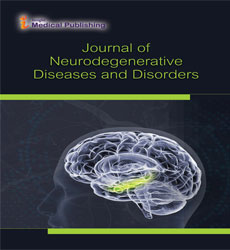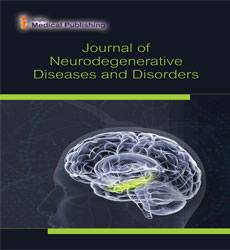A Spectrum Description of Neuron Disease
Shekher Mohan*
Department of Pharmaceutical Sciences, Manchester University, USA
- *Corresponding Author:
- Shekher Mohan Department of Pharmaceutical Sciences, Manchester University, USA, Email: Shekher-_Mohan@nu.edu.pk
Received: December 03, 2021; Accepted: December 17, 2021; Published: December 24, 2021
Citation: Shekher Mohan (2021) A brief physiology of motor neuron disease. J Neurodegenero Dis Disord.Vol.4 No.1: 003.
Introduction
Motor neuron diseases affect both children and adults. Although each motor neuron disease affects patients differently, they all cause movement-related symptoms, especially muscle weakness. Many of these diseases appear to occur randomly with no known cause, but some types are inherited. Examination of these inherited forms has led to the discovery of various genes (eg SOD1) that are thought to be important in understanding how the disease occurs. Symptoms of motor neuron disease may begin to appear at birth or may appear gradually in life. Many of these diseases get worse over time; while some, like ALS, shorten a person's life span, others do not. Currently, there are no approved treatments for most motor neuron disorders, and care often has symptoms.
Symptoms and signs depend on a specific disease, but motor neuron disorders are often seen as a group of movement-related symptoms. They come slowly, and they get worse in more than three months. Various patterns of muscle weakness are present, and muscle cramps and spasms may occur. A person may have difficulty breathing on ascending stairs (exertion), difficulty breathing while lying on the floor (orthopnea), or even difficulty breathing if the respiratory muscles are involved. Bulbar symptoms, including speech difficulties (dysarthria), difficulty swallowing (dysphagia), and excessive saliva production (sialorrhea), are also possible. Hearing, or hearing ability, is usually unaffected. Emotional disorders (e.g. pseudobulbar impairment) and behavioral and behavioral changes (e.g. problems with proper pronunciation, decision making, and memory) are also identified. There may be low motor neuron findings (e.g. muscle loss, muscle movement), high motor neuron findings (e.g. brisk reflexes, Babinski reflex, Hoffman reflex, elevated muscle tone), or both.
Conclusion
Motor neuron diseases are seen in both children and adults. Those that affect babies are usually hereditary or family and their symptoms are present at birth or appear before they learn to walk. Those affecting adults usually appear after 40 years. The course of the clinic depends on the disease, but most develop or worsen over the course of months. Some are lethal (e.g. ALS), and some are non-lethal (e.g. PLS).
Acknowledgments
The authors are thankful for the acceptance of the article and its publications in the journal.
Conflict of Interest
None of the authors have any conflicts of interest with this work.

Open Access Journals
- Aquaculture & Veterinary Science
- Chemistry & Chemical Sciences
- Clinical Sciences
- Engineering
- General Science
- Genetics & Molecular Biology
- Health Care & Nursing
- Immunology & Microbiology
- Materials Science
- Mathematics & Physics
- Medical Sciences
- Neurology & Psychiatry
- Oncology & Cancer Science
- Pharmaceutical Sciences
